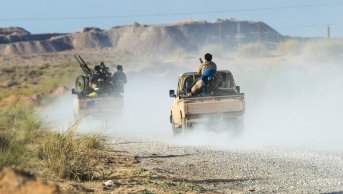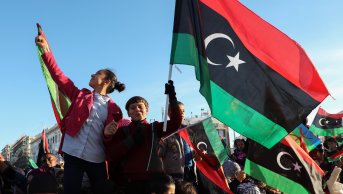Fresh Blood and New Safe Haven for Jihadists: Libya

The security of the oil supply and stability issues have come to the forefront regarding discussions on the future of post-Muammar Gaddafi Libya.
Over the past two years, the severe security-related problems have not yet been solved. In addition, statements and initiatives regarding the autonomy of Fezzan and Benghazi continue to affect the current situation of the country. The fact that radical groups, especially jihadists, are active in Libya and that the central government has not yet been able to eliminate these groups constitute a major barrier to solving the country's security and stability issues in addition to many other problems which the country has been facing in the post-Gaddafi period.
It was inevitable that radical groups would make radical demands in Libya, where political tradition is weak. The link between al-Qaeda and the radicals, who argue that democracy is an anti-Islamic Western regime; their current power in the country; and the potential regional impact of the current instability in Libya are still in question. In the past two years, the rise in the number of attacks against national and international targets both in Libya and in other African countries almost proves the negative predictions, which urge against the danger of the reactivation of al-Qaeda and jihadists in Africa, to be true. For example, some Islamist groups claimed responsibility for attacks on the Red Cross office, a UN convoy and the American mission in Benghazi. As a result, pessimism over Libya's future regarding the issues of security and stability began to prevail.
A major security gap emerged in post-Gaddafi Libya mainly because of the long-lasting civil war and the total collapse of the regime in the country. The new central government's efforts to bring the militia forces, formed during the civil war, under control have not yet been successful. In addition, uncontrolled armament, which took place during the civil war, could not be reversed either. Despite various projects for disarmament, they still fail to reach the desired effects.
Therefore, the legitimate state monopoly of violence over the acts of violence in the post-Gaddafi Libya has not been provided. As a result, the security gap caused the violence to become part of daily life and to become normalized in the country. The security gap, especially in southern and eastern Libya (Fezzan and Benghazi), where the central government's control is too weak or even nonexistent, has reached tragic levels. It is observed that this situation has led to a vicious cycle between individual armament, militia forces and jihadists' actions and violence in general in the country. Although individual and militia violence assume the biggest role in this deadlock, the presence and actions of jihadists are at an alarming level both in Libya and in Africa.
After popular uprisings began to radically affect the region in early 2011, al-Qaeda's senior leadership in Pakistan and Afghanistan started to focus on the activities in northern Africa and sub-Saharan Africa. In video records of messages by senior leaders of al-Qaeda, the number of direct calls for jihadists in North Africa and coastal areas has increased since 2011. Those urgings include tactical and ideological advice for jihadists to collect arms, form training camps and establish secret networks in order to establish an Islamic state and implement Shariah law.
In addition, the al-Qaeda in the Islamic Maghreb (AQIM) has become stronger as a result of uncertainties in the region after the Arab Spring and has gained a more effective position in the region. Over the past few years, Libya has become a significant base for AQIM, which has come to the fore especially with attacks and actions in Mali and Algeria. Libya, used both to provide arms and also as an operation base, has become a safe haven for al-Qaeda in terms of its authority and security gap.
Many jihadist groups have emerged in Libya since 2011. The extent of relations between those jihadist groups, the al-Qaeda senior leadership and AQIM has led to discussions. For instance, Ansar al-Sharia, which is active in Benghazi, consists of Salafi-jihadist militia forces; it is alleged that Ansar al-Sharia is the Libyan branch of al-Qaeda. However, those allegations are denied by Abu Sufian bin Qumu, the leader of Ansar al-Sharia. Ansar al-Sharia, of which the local emphasis comes to the fore, corresponds to al-Qaeda in many aspects in tactical and ideological terms. It is in contact and coordinating with other groups called Ansar al-Sharia in the region. Besides, it also has strong relations with Salafi-jihadist brigades in Libya.
Frequently using social media networks, Ansar al-Sharia provides social services in Libya, and Benghazi in particular. In the past two years, the organization has carried out anti-drug projects in cooperation with hospitals and has conducted social activities such as cleaning up roads, giving religious lessons, opening religious schools, organizing various projects for children, opening clinics and basic services like maintaining security. As the new government could not establish effective state control since 2011, organizations like Ansar al-Sharia have been expanding their social support by assuming many services which the government is responsible for.
On the other hand, the latest studies on AQIM point out the presence of new generation jihadist groups in Libya. It should be noted that these new-generation jihadists are not different from al-Qaeda in ideological and tactical terms. However, there are also serious allegations that the new generation of jihadists act more independently than the central al-Qaeda. In this regard, the possibility that al-Qaeda could rise through the new generation and become influential in the region in the coming years should be brought to the table in detail.












